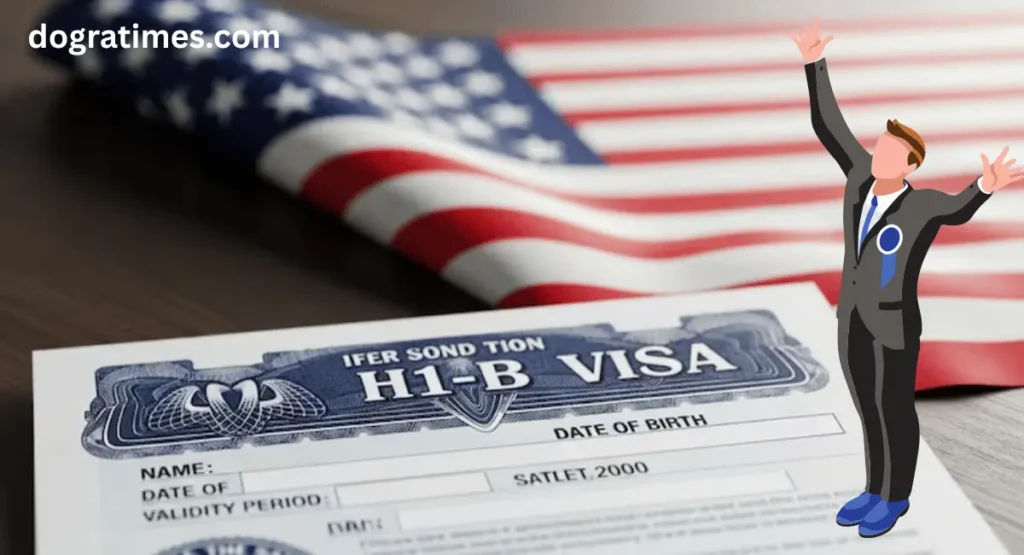In a move that’s sent shockwaves through the global tech community, the Trump administration has unveiled a controversial new fee structure for H-1B visas, targeting what President Donald Trump describes as an “abused” system posing a “national security threat.” Announced late last week, the policy introduces a hefty $100,000 charge on certain visa petitions—a figure that dwarfs the median salary of many entry-level H-1B holders and has sparked widespread alarm, especially among Indian professionals who account for over 70% of the program’s beneficiaries.
The revelation, dropped on a Friday, initially painted a picture of chaos. Social media buzzed with confusion, and major U.S. tech giants like Amazon, Microsoft, and JPMorgan scrambled to issue urgent advisories. Employees on H-1B visas were told to hightail it back to the U.S. soil if they were abroad, with instructions to stay put “for the foreseeable future.” Flight bookings surged as professionals raced against an unclear deadline of September 21, 2025, fearing the worst for their careers and livelihoods.
But amid the frenzy, official clarifications have begun to paint a less apocalyptic picture. The White House and U.S. Citizenship and Immigration Services (USCIS) have stepped in to debunk some of the most terrifying rumors, emphasizing that this isn’t the blanket crackdown it first appeared to be. Let’s break it down: What exactly is this fee? Who does it hit? And why did it cause such a stir?
The Fee That Isn’t What It Seems
At first glance, the $100,000 tag sounds like an insurmountable barrier—equivalent to more than a year’s pay for a fresh H-1B visa holder and over 80% of the average salary for all recipients. Trump framed it as a necessary reform to curb exploitation and protect American jobs, but details reveal it’s far from the “annual” levy some headlines screamed about.
White House spokesperson Karoline Leavitt was quick to clarify on X (formerly Twitter): This is a one-time fee applied solely to the visa petition itself, not a recurring nightmare. And crucially, it’s not retroactive. Existing H-1B visa holders—those already in the U.S. or with valid stamps in their passports—breathe easy. You won’t owe a dime if your petition was filed before the rule kicks in or if you’re renewing an current approval.
The USCIS followed up with a formal document, stating the policy only affects prospective petitions filed after the effective date. In plain terms: If you’re already on an H-1B, your status remains untouched. No surprise fees lurking in your next paycheck.
Who Pays, and Who Gets Hit?
The financial burden falls squarely on the employers, not the workers. U.S. companies sponsoring H-1B talent—think Silicon Valley behemoths hiring software engineers, data scientists, and IT specialists—will foot the bill for new hires. This applies starting with the next H-1B lottery round, targeting foreign workers applying after September 21, 2025.
Renewals? Safe. Current holders abroad? They can re-enter the U.S. without ponying up the cash, as long as their visa is valid. Leavitt reiterated: “The $100,000 H-1B visa fee applies only to new visas, not renewals, and not current visa holders.”
So, why the mad dash by companies to recall their teams? Simple: The initial announcement was light on specifics, leaving a vacuum filled by fear. With September 21 looming as a potential cutoff, firms erred on the side of caution. Better to have talent stateside than risk bureaucratic limbo, right? Now, with clarifications flowing, the panic is easing—but the damage to morale and planning is done.
Exemptions and Loopholes: A Silver Lining?
Not everyone is in the crosshairs. The USCIS proclamation carves out clear exceptions for:
- Beneficiaries of petitions filed before the effective date.
- Those with already-approved petitions.
- Individuals holding validly issued H-1B visas.
There’s even a wildcard: The Secretary of Homeland Security can waive the fee (and related restrictions) for specific people, companies, or entire industries if it’s deemed in the “national interest” and doesn’t threaten U.S. security or welfare. This could be a lifeline for critical sectors like tech, where H-1B workers drive innovation in AI, cybersecurity, and beyond.
For Indian professionals, who dominate the H-1B landscape, this policy underscores the precariousness of the American Dream. Many have built lives, families, and careers in the U.S., only to face policy whiplash with each election cycle. The fee could deter smaller firms from sponsoring talent, potentially shrinking opportunities and pushing skilled workers toward Canada, the UK, or even back home to India’s booming tech hubs.
Looking Ahead: Reform or Roadblock?
Trump’s push signals a broader agenda to overhaul immigration, prioritizing “America First” by making it costlier for companies to tap global talent pools. Critics argue it could stifle U.S. competitiveness, as firms like Google and Meta rely on H-1B visas to fill skill gaps. Supporters see it as a fair fix to prevent wage suppression and overuse.
As the dust settles, the real winners might be those who stay informed. For now, if you’re an H-1B holder, check your status, heed your employer’s advice, and monitor USCIS updates. The visa program’s future hangs in the balance—but it’s not game over yet. In the high-stakes world of global mobility, clarity is the ultimate currency.



